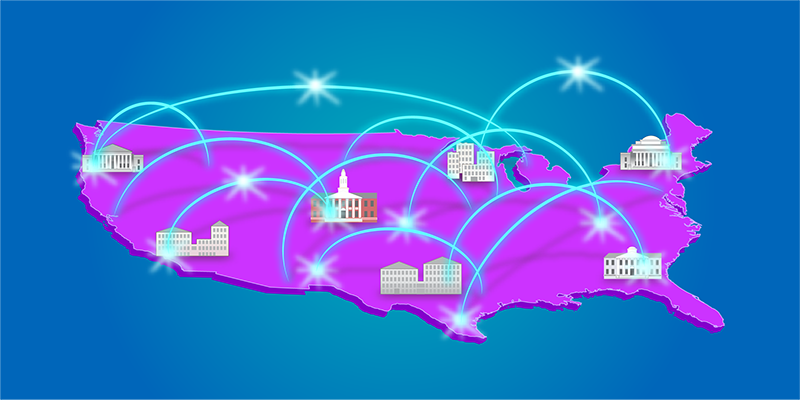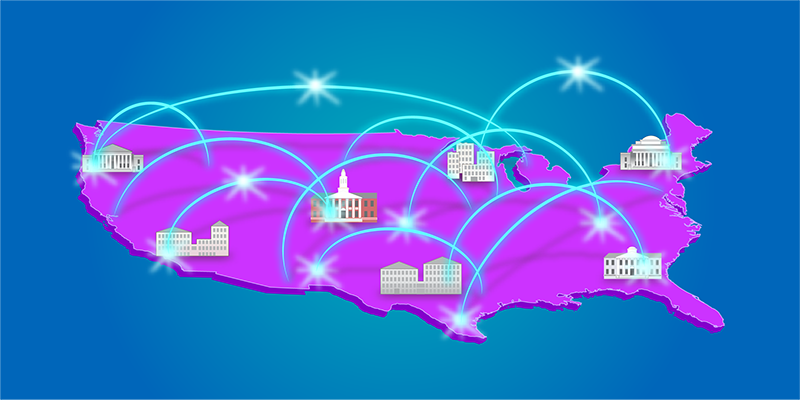Educators Needed for a Quantum Future
In 2018 the US federal government passed the National Quantum Initiative Act, a program designed to accelerate the country’s quantum research and development activities. In the next decade, quantum information science and quantum technologies are expected to have a significant impact on the US economy, as well as on that of other countries. To fulfill that promise, the US will need a “quantum-capable” workforce that is conversant with the core aspects of quantum technologies and is large enough to meet the expected demand. But even now, as quantum-career opportunities are just starting to appear, supply falls behind demand; according to a 2022 report, there is currently only around one qualified candidate for every three quantum job openings [1]. We call for education institutions and funding agencies to invest significantly in workforce development efforts to prevent the worsening of this dearth.
Most of today’s jobs in quantum information science and technology (QIST) require detailed knowledge and skills that students typically gain in graduate-level programs [2]. As the quantum industry matures from having a research and development focus toward having a deployment focus, this requirement will likely relax. The change is expected to increase the proportion of QIST jobs compatible with undergraduate-level training. However, 86% of QIST-focused courses currently take place at PhD-granting research institutions [3]. Very few other undergraduate institutions offer opportunities to learn about the subject. To meet the future need, we believe that aspect needs to change with QIST education being incorporated into the curricula at predominantly undergraduate institutions and community colleges in the US. However, adding QIST classes to the curricula at these institutions will be no easy task.
The challenges of bringing QIST programs to such venues include: how to fund them, where to house them, and what concepts to prioritize. In 2021, with the support of the American Physical Society’s (APS’s) Innovation Fund, we helped organize the first Quantum Undergraduate Education and Scientific Training (QUEST) workshop to discuss these and other challenges with faculty from undergraduate-level institutions [4]. The workshop focused on discussing anticipated industry needs, existing educational programs, and best practices for creating thriving inclusive programs, as well as identifying key challenges relating to undergraduate institutions and possible ways to overcome them.
The participants came with questions touching on everything from how to develop the best curricula outlines to how to gain institutional support for starting these new courses. Frequently voiced question included, “What topics should the classes focus on and what learning outcomes should classes aim for?” and “How can faculty convince administrators of the benefit of QIST programs so that they are granted sufficient resources to run them?” The interdisciplinary nature of QIST allows programs to be housed in various departments. So participants also wanted to learn how to best manage potential conflicts and challenges arising from disciplinary silos.
While the specific answers to these questions are different for different institutions, we—and the workshop participants—believe that most solutions will benefit from the development of a multilevel community of QIST educators. Undergraduate institutions often only have one or two faculty members with any QIST experience, which can leave those people feeling isolated when it comes to building QIST programs on their campuses. In addition, no course is sustainable to run or maintain if only one or two faculty members are involved in its planning and teaching. Having a network of colleagues who are all in the same boat—even if they are physically distant—helps alleviate feelings of isolation and provide avenues for sharing resources and expertise. Resource sharing and community support also increases the quality of programs and avoids the need to “reinvent the wheel.”
Federal agencies have begun to recognize the value in engaging with QIST at a wider range of institutions both through the Chips and Science Act and through programs such as the National Science Foundation’s ExpandQISE and the US Department of Energy’s RENEW. These programs strongly encourage partnerships between institutes with little QIST experience and those with deep expertise in the field.
While encouraging, these national programs are insufficient to build QIST education to where it needs to be—by nature, federal programs are highly competitive and only a small fraction of applicants benefit from them. Also required are regional and local efforts, where seemingly small acts can have a large impact. For example, administrators at undergraduate institutes could provide support for professional development and networking opportunities for faculty members to help build QIST-focused communities. Larger PhD-granting institutions with established QIST programs could invite faculty from undergraduate institutions to summer workshops aimed at onboarding graduate students and postdocs into the QIST field.
Capturing these low-hanging fruit will go a long way to creating a strong QIST-education community and addressing challenges associated with developing a quantum-capable workforce. The challenges are great, but physics, mathematics, and computer science programs are well suited to meeting them: all thrive on tackling thorny technical problems at the cutting edge of research and technology.
References
- M. Masiowski et al., “Quantum computing funding remains strong, but talent gap raises concern,” McKinsey Digital (15 June 2022), https://www.mckinsey.com/capabilities/mckinsey-digital/our-insights/quantum-computing-funding-remains-strong-but-talent-gap-raises-concern.
- M. Kaur and A. Venegas-Gomez, “Defining the quantum workforce landscape: A review of global quantum education initiatives,” Opt. Eng. 61, No. 8, 081806 (2022).
- B. Cervantes et al., “An overview of quantum information science courses at US Institutions,” Physics Education Research Conf. 2021 (2021).
- J. K. Perron et al., “Quantum undergraduate education and scientific training,” arXiv:2109.13850.





